When traveling to Marrakech, adjust your expectations to fit the Marrakesh experience.
No place on earth resembles the lifestyle and exuberance of the Morrocan city. As the ‘Pearl of the South,’ the urban center has stood strong for centuries even earning the title as the cultural hub of Morocco. Here are some of the must-visit places of cultural and historical significance.
1. The Palais Bahia
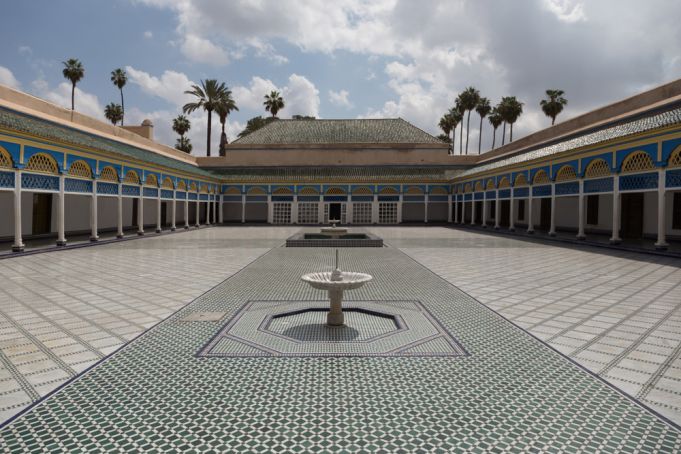
The Bahia Palace was constructed in the 1860s by Si Moussa and still stands today. Rich in history, the name is Arabic for ‘brilliance.’ Stretched across a 2-acre parcel of land at the heart of Marrakesh it has 150 rooms including the prolific harem section. The court once accommodated the Resident-General from the French Protectorate era.
The Bahia Palace ranks are highly rated on reviews from leading publications such as Lonely Planet, Afar Magazine, and the Michelin Guide. As a palace built for Si Moussa, who was the Grand Vizier of the Sultan.
The height of Bou Ahmed’s reign saw the Palace boast of lush gardens and rooms decorated in true Moroccan style. He resided with his four wives alongside their concubines. The rooms had a unique blend of cedarwood and carved stucco. Today, visitors do not have access to the harem but the palace gardens filled with orange trees are open for public viewing. The reflection from the afternoon sun forms eye-catching patterns on the stained-glass windows. Not forgetting, the beautiful painting of carved cedarwood in the wives’ apartment.
2. Jami ‘al-Kutubiyah Mosque
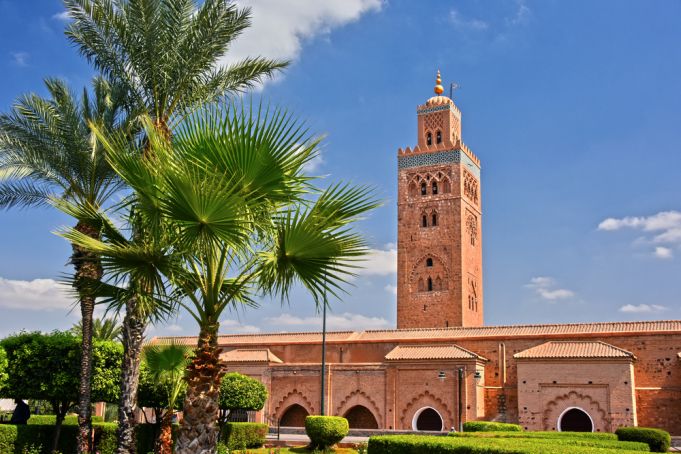
Popularly known as the Koutoubia Mosque, this is the largest worship center in Marrakesh by far. Resting in the Southwestern district of the city, it dates back to the reign of the Berber Almohad Caliph Yaqub al-Mansour who reigned in the 1100s.
Many visitors rely on the 77 mere height to find their way back to the main square. Of course, several other attractions blow it away, but its historical significance, centrally placed location and easy accessibility make it a worthy visit for anyone in Marrakesh. The site can be a good addition to your tour package, however, as a non-muslim, you will be denied inside access.
3. Saadian tombs
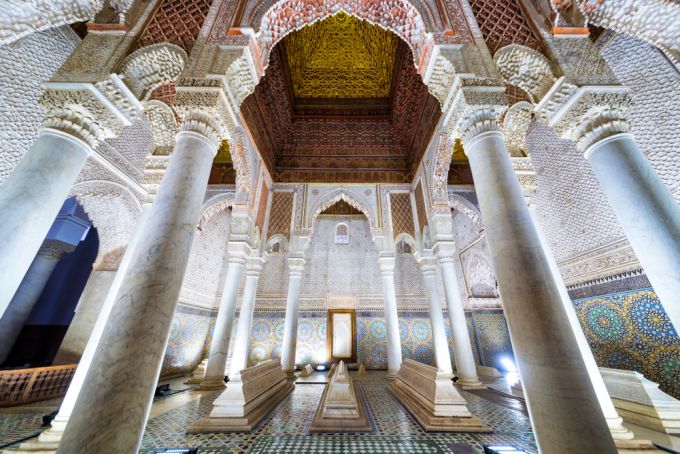
The Saadin tombs house the remains of the Saadian family who were believed to have descended from the prophet Muhamed himself. The distinguished Sultan Ahmed Al Mansour Ed Dahbi spared no coin when it came to his final resting place and built the Italian marble plasterwork. Most of the Sultan’s family members are buried in equally decorated chambers. The body remains rest in the crypt. The tombs were discovered in 1917, after which excavators attempted to restore them to their former glory. Ph Francesco Dazzi / Shutterstock.com
4. Marrakech old Medina
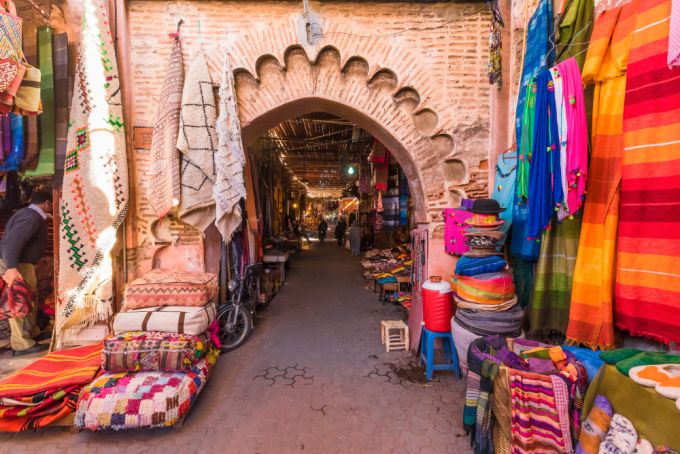
Covering 700 acres, Medina in Marrakesh is regarded as a UNESCO world heritage site. Founded in the 1100s by the Almoravids, Marrakesh played an influential role in the western Muslim world. The Medina is the old city, surrounded by 19 Km pin walls. It’s surprising how a century ago the entire city resided within these walls. A fifth of the city today resides within its myriad of traditional houses and square riads. At the center of the labyrinth is Jemaa el-Fnaa square buzzing with Moroccan delicacies and entertainment.
5. Menara gardens
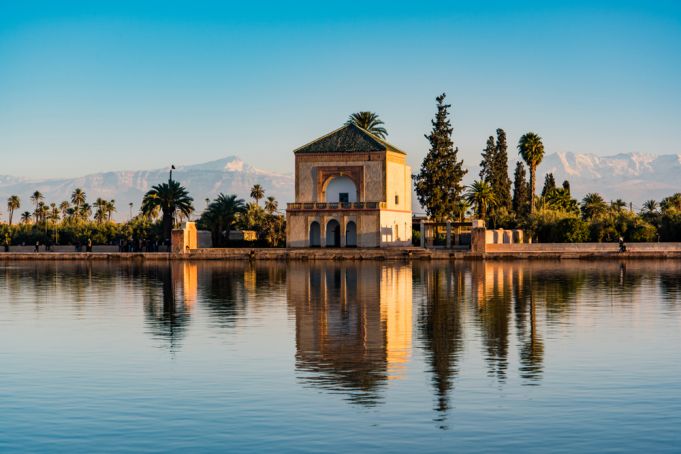
The Menara Gardens was a project of Abd al-Mu’min - the Almohad Caliph in 1130. He had just conquered Marrakesh overthrowing the previous Almoravid dynasty. The name ‘Menara’ describes a lighthouse, a structure that is absent in the sand-swept city. A conversation with a knowledgeable tour guide can shed more light on the local interpretations of Menara - which residents associate with any elevated building. The pavilion was constructed much later in the 1500s during the Saadi dynasty.













